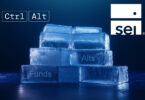Federal Reserve Governor Michelle Bowman suggested a methodology for regulators to get comfortable with innovation during a speech yesterday. Most innovations come with both benefits and risks. The key is for regulators to expand their understanding by getting to grips with new technology, business models and the companies introducing the innovations to the banking sector. They also need to understand the ‘why’, the problem that the innovation aims to solve. She acknowledged that sometimes regulators “reflexively resist these changes”.
It’s up to industry to educate regulators, but at the same time regulators need to be willing to listen.
“We must fight the temptation to say “no” and resist new technology, and instead focus on solutions — how can we mitigate the risk of new technology? What benefits will technology bring to the financial system? How can we provide clear regulatory expectations?” said Governor Bowman.
“The appeal of resisting innovation — resisting change — is that it preserves the familiar and known. But the cost of resistance to change may be great, in that it promotes stagnation and inertia. Ultimately, this could lead to a banking system that may be safer and smaller, but also less effective at providing banking products and services and in supporting the U.S. economy.”
Sometimes, technology is unable to address frictions that exist for a reason. She gave the example of compliance in cross-border payments. “New technology alone cannot solve the issue unless it also addresses the required safeguards,” she noted. We’d add that innovation can also help with compliance.
For example, both Partior and Project Agorá, which involve tokenization, aim to perform compliance checks just once and in advance of the transaction. This prevents many of the typical holdups in international payments. A separate issue is that blockchains enable new types of compliance checks through blockchain analysis, something that’s worth exploring.
Tokenization of money
Governor Bowman also addressed tokenization, exploring the potential impact. “Will “tokenized” products and platforms duplicate existing bank deposits and payment rails, potentially creating parallel systems? If so, will the products and platforms that duplicate these functions provide the same legal protections for customers and the overall financial system?” she asked.
Meanwhile, in a speech last year, Governor Bowman highlighted reservations about allowing a wholesale central bank digital currency (CBDC) to circulate on a platform not operated by the bank, for example as part of a Unified Ledger. However, another possibility is to allow it to control its own ledger.
Since then the BIS has launched Project Agorá for cross border payments with seven central banks, including the New York Innovation Center (NYIC), which is part of the New York Fed. The NYIC emphasized the project’s exploratory nature, which will use tokenized central bank money.
The terminology in Project Agorá is noteworthy in that it avoids the phrase ‘wholesale CBDC’ and instead sticks to ‘tokenized central bank money’. This distinction is reminiscent of a Federal Reserve paper that, in our view, explored the legal nuances of tokenized central bank money.
In the paper the authors differentiate between the payment system and the settlement asset. If tokenized central bank money is the same settlement asset then legally it’s the same as what exists today. With DLT they argue that the novelty is in the payment system and its programmable nature. Thus, in Governor Bowman’s speech relating to wholesale CBDC, she questioned the use of that term.
The NYIC also takes on the role of technical observer of the recently announced Regulated Settlement Network that will explore tokenized deposits.






